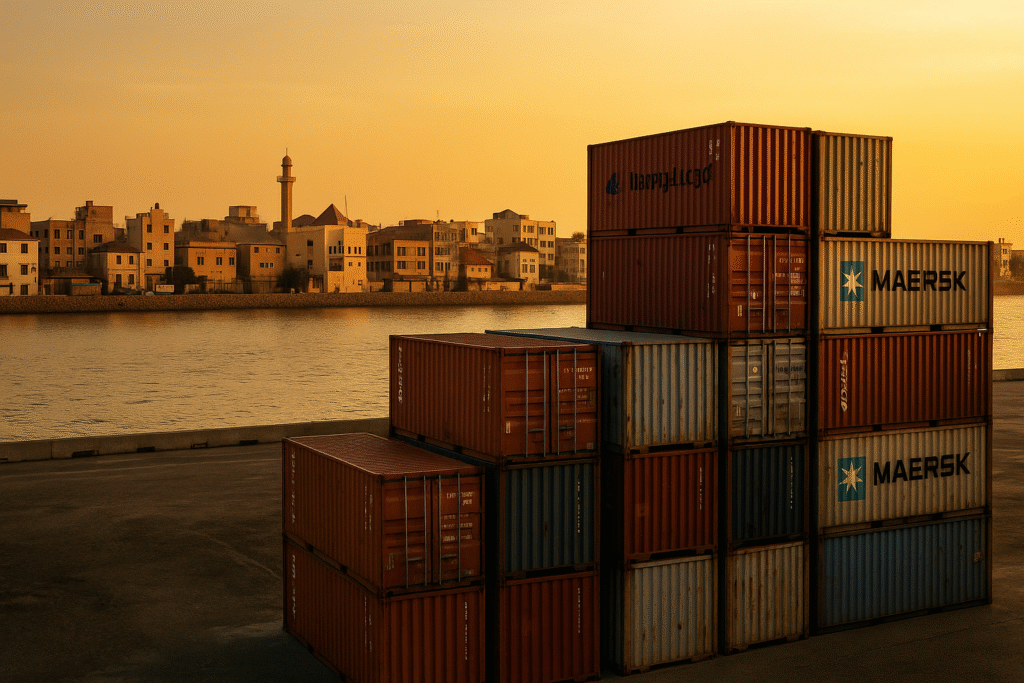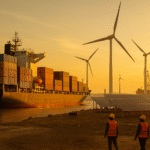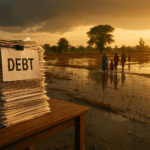Today, I am attending the opening of the Africa Climate Summit in Addis Ababa, Ethiopia, and one issue is already at the centre of my reflections: Africa’s climate finance is stuck in debt mode.
Every time we meet at a COP or at global climate summits, pledges worth billions, and now trillions, are announced. Yet when finance finally arrives in Africa, it rarely comes in the form that the continent actually needs. Instead of predictable, accessible grants, particularly for adaptation, what flows most often are loans, sometimes concessional, often complex, but always repayable.
For a continent already struggling under growing debt burdens, this is not just a financing mechanism; it is a structural injustice that constrains Africa’s ability to adapt and transition.
Adaptation arrives as debt
The IMF’s 2025 figures are revealing. In 2024, 47% of climate finance in Africa went to adaptation, but 57% of that adaptation finance arrived as loans, largely concessional loans.
Adaptation is about building resilience: flood defences, drought-resistant crops, coastal protection, and early warning systems. These projects do not generate immediate revenues. They safeguard lives and livelihoods. And yet, Africa is asked to finance them through debt.
Even concessional loans, while cheaper, add to already fragile debt-to-GDP ratios. For countries such as Zambia or Ghana, adaptation loans are politically and fiscally unsustainable.
This contradiction is stark: the very finance meant to reduce vulnerability is deepening fiscal fragility.
Debt is eating the climate budget
The fiscal squeeze is visible everywhere. According to Brookings, Africa paid $163 billion in debt service in 2024, almost three times more than in 2010.
That is money that could have gone into clean energy projects, new adaptation infrastructure, or social safety nets. Instead, it went to creditors.
For me, this is not just a macroeconomic statistic. It is personal. Every dollar Africa spends on debt service is a dollar not spent on electrifying schools in rural Nigeria, powering hospitals in Kenya, or restoring farmland in Malawi. Debt is literally choking Africa’s climate budget.
We explored this in detail in our earlier blog on Africa’s Climate Finance Crisis, and the crisis has only deepened.
COP29 didn’t solve the grant gap
At COP29, negotiators hailed the agreement of a new global climate finance goal: $1.3 trillion annually by 2035. On the surface, it was historic. But when I looked closely at the numbers, I could not share in the celebrations.
Of that $1.3 trillion, only $300 billion is expected to come from public sources. The rest is to be “mobilised” from private capital.
The package remains loan-heavy, private-heavy, and grant-light. For African negotiators and civil society, the verdict was clear: the fundamental injustice of climate finance had not been corrected.
At the summit, I hear the same concern repeated in corridors and side events: without enforceable grant targets, the “grant gap” will persist.
The cost of capital and currency risk
Even when capital flows, it is priced unfairly. The International Energy Agency (2024) found that the cost of capital in Africa is two to three times higher than in OECD countries.
This means a solar farm in Kenya costs significantly more to finance than an equivalent project in Germany or Japan. Add to this currency risk, loans priced in dollars or euros, repaid in local currencies prone to depreciation, and the problem multiplies. Tariffs increase, utilities collapse, and projects stall.
This is why I have consistently argued for local-currency lending, guarantees, and FX hedging mechanisms. They are not optional extras. They are essential tools to unlock affordable renewable energy for Africans. Without them, the transition will remain too expensive.
Grants exist, but are out of reach
Even where grants exist, they are painfully slow and bureaucratic. The Green Climate Fund (GCF) is the flagship instrument, yet African institutions often wait years for accreditation and approval.
Local organisations face the steepest hurdles, while international intermediaries capture administrative fees. The GCF’s Independent Evaluation Unit (2024) admitted: “the most vulnerable face the toughest access barriers.”
I have seen this play out. Communities hit by floods or drought cannot wait for multi-year approval cycles. By the time the money arrives, the damage has already compounded.
Shrinking aid, shrinking grants
Another worrying trend is that official development assistance (ODA), one of the primary sources of grant-based finance, is projected to decline again in 2025 (OECD).
This decline collides with rising needs. Africa’s climate adaptation bill is climbing, but the pool of grants is shrinking. The result: a widening adaptation finance gap, just as communities need more support.
What must change
From where I sit at this summit, the pathway forward requires three urgent shifts:
- Grant-first adaptation and loss-and-damage. Loans may have a role in mitigation projects with revenue potential. But adaptation and loss, and damage must be financed through grants. Anything else is inequitable.
- De-risk without debt. Guarantees, local currency lending, and FX hedging must become standard practice in Africa. These reduce risk without adding new repayment burdens. Our earlier blog on Zombie Energy Systems showed how new finance can be wasted if these risks are ignored.
- Green debt relief. Debt-for-climate swaps and climate clauses in sovereign bonds can ease fiscal pressure while tying repayments to climate resilience.
These are not radical demands. They are pragmatic steps to make finance credible and fair.
My message to COP30
As COP30 approaches, my message is clear: Africa doesn’t need more loans.
We need grant-first adaptation finance, accessible risk-sharing tools, and faster, fairer access to funds. Without this, the energy transition will remain stuck in debt mode, and millions of Africans will remain vulnerable to climate shocks.
The global climate finance system was not designed with Africa in mind. That is why it must be redesigned with Africa’s realities at its core.
The bottom line
I came to this summit with hope, but also clarity. The truth is unavoidable:
- Adaptation arrives as debt.
- Debt service eats fiscal space.
- COP pledges remain loan-heavy.
- The cost of capital is too high.
- Grants are slow and scarce.
- The grant pool is shrinking.
Yet solutions exist: grant-first adaptation, de-risking without debt, and green debt relief.
Africa cannot continue to adapt to promises or transition on loans. For the continent’s energy future to be just and sustainable, finance must be reimagined.
“We will not adapt on promises. We will not transition on debt. Africa needs grant-first finance, now.”
Follow Energy Transition Africa for more updates:
![]()
![]()
Vincent Egoro is a leading African voice on the just energy transition, fossil fuel phaseout and critical minerals governance. With over a decade of regional advocacy experience, he works at the intersection of transparency, accountability and sustainability, advancing community-driven solutions that put Africa at the heart of global climate action.




Pingback: Fossil Fuel Revenues in Decline: Who Pays for Africa’s Transition? - Energy Transition Africa Who Pays for Africa’s Transition as Fossil Revenues Decline?